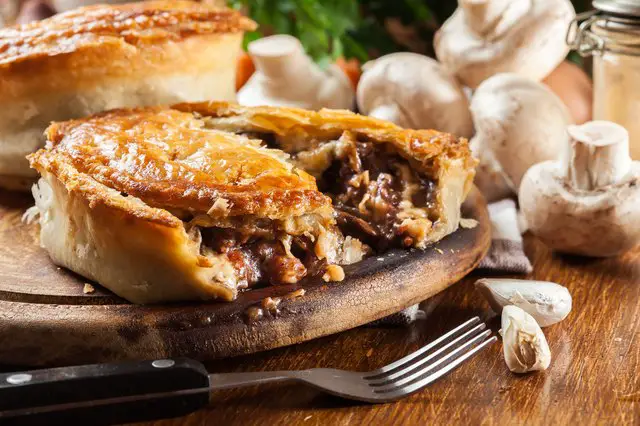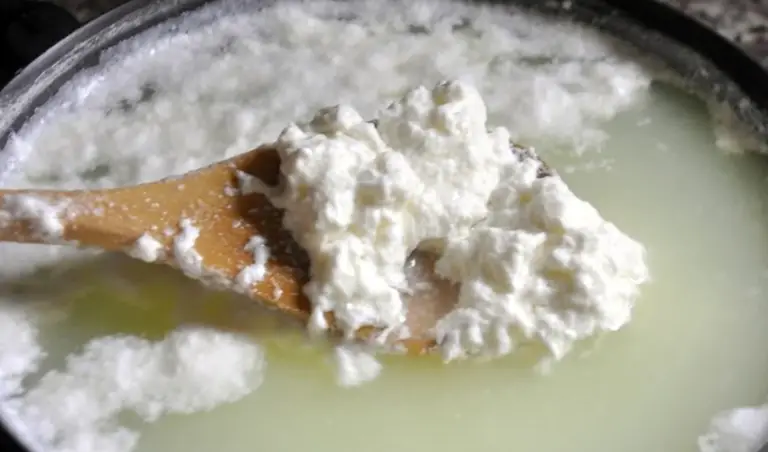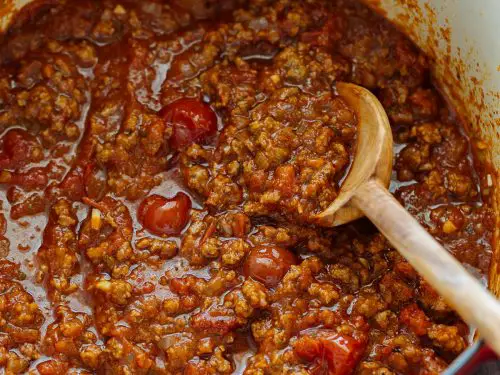When preparing to cook gammon, it’s common to wonder whether you should remove the plastic packaging before placing it in the oven. According to numerous sources, including reputable culinary websites and forums, it is important to remove the plastic from gammon before cooking. Leaving the plastic on can result in undesirable flavors and potential health risks. Always take the time to carefully unwrap the gammon and discard the plastic packaging before proceeding with your cooking process.
Key Takeaways:
- Removing the plastic from gammon before cooking is essential for food safety and flavor.
- Leaving the plastic on can result in undesirable flavors and potential health risks.
- Properly removing the plastic involves cutting along the edges and peeling it back without touching the meat.
- Soaking cured or smoked gammon before cooking can help reduce saltiness.
- Once cooked, allow the gammon to rest before serving and enjoy it with a variety of delicious sides.
The Reason Behind Removing the Plastic
When it comes to cooking gammon, one important step that should never be overlooked is removing the plastic packaging. But why is it necessary? Well, there are several reasons why it is recommended to take the time to unwrap the gammon before cooking.
First and foremost, removing the plastic ensures food safety. Plastic wrappings can contain materials like PVC, which can release toxic chemicals when exposed to high heat. By removing the plastic, you minimize the risk of these harmful substances seeping into your food.
Another reason is that leaving the plastic on can affect the texture and taste of the gammon. The plastic can trap moisture and steam, resulting in a less desirable texture and an altered flavor. By removing the plastic, you allow the gammon to cook evenly and retain its natural flavors.
The Potential Health Risks
Leaving plastic on gammon can potentially lead to health risks due to the release of harmful chemicals, such as PVC, when exposed to high heat. These chemicals can contaminate the food and pose a risk to your health when consumed. To ensure the safety of your meal, it is crucial to remove the plastic packaging before cooking.
Ensuring Optimal Cooking Results
| Reason | Benefit |
|---|---|
| Preventing the release of harmful chemicals | Ensuring food safety |
| Avoiding undesirable texture and taste | Maintaining the natural flavors |
By taking the simple step of removing the plastic from gammon before cooking, you can protect your health and enhance the overall quality of your dish. Remember to always prioritize food safety and follow recommended cooking guidelines for a delicious and worry-free dining experience.
How to Properly Remove the Plastic
Removing the plastic from gammon is an essential step to ensure food safety and delicious results. Follow these simple instructions to properly remove the plastic packaging:
- Place the gammon on a clean and sanitized surface.
- Using a sharp knife, carefully cut along the edges of the plastic wrapping. Take extra caution to avoid cutting into the meat.
- Peel back the plastic slowly, ensuring that you do not touch the exposed meat with your hands.
- Once the plastic is completely removed, you can proceed with seasoning, marinating, or preparing the gammon according to your desired recipe.
Remember to wash your hands thoroughly after handling the plastic to maintain proper food hygiene.
Expert Tip:
If you prefer a hassle-free method, you can also choose to purchase pre-packaged gammon that comes without the need for removing plastic wrapping. These options are widely available in most grocery stores and can save you valuable time in the kitchen.
| Advantages of Properly Removing the Plastic | Disadvantages of Leaving the Plastic On |
|---|---|
| Ensures food safety | Potential release of harmful chemicals due to heat exposure |
| Enhances the taste and texture of the gammon | Undesirable flavors and texture due to trapped moisture and steam |
| Allows for proper seasoning and marinating | Potential health risks from ingesting plastic particles |
By following these steps and understanding the importance of removing the plastic, you can confidently cook gammon without any concerns about compromising taste or safety.
Cooking Tips for Gammon
When it comes to cooking gammon, there are a few tips and tricks that can help you achieve the best results. Whether you’re preparing a festive meal or a tasty sandwich, these cooking tips will ensure that your gammon is flavorful and delicious.
Soak and Reduce Saltiness
Before cooking your gammon, consider soaking it in water for a few hours. This step is especially important if you are using a cured or smoked gammon, as it helps to reduce its saltiness. Soaking the gammon will help to draw out excess salt, resulting in a more balanced and enjoyable flavor.
Add Flavorful Ingredients
To enhance the taste of your gammon, consider adding flavorful ingredients during the cooking process. Cloves, brown sugar, mustard, and pineapple are all great additions that can infuse the gammon with delicious flavors. Whether you choose to glaze the gammon with a mixture of brown sugar and mustard or add pineapple rings for a sweet and tangy twist, these ingredients will take your gammon to the next level.
Follow Cooking Times and Guidelines
Cooking times for gammon can vary depending on the size and thickness of the joint. To ensure that your gammon is cooked to perfection, it is important to follow a trusted recipe or consult a cooking guide for specific instructions. Cooking gammon at the right temperature and for the correct amount of time will result in a juicy and tender meat that is full of flavor.
| Cooking Tip | Description |
|---|---|
| Soak in Water | Soak the gammon in water for a few hours prior to cooking to help reduce the saltiness. |
| Add Flavor | Enhance the taste of the gammon by adding ingredients like cloves, brown sugar, mustard, or pineapple. |
| Follow Cooking Times | Consult a trusted recipe or cooking guide for specific instructions on cooking times and temperatures. |
By following these cooking tips for gammon, you can elevate the flavors and ensure a delicious and satisfying meal. Soak the gammon to reduce saltiness, add flavorful ingredients to enhance the taste, and always follow cooking times and guidelines for the best results. Enjoy the process of cooking gammon and savor the mouthwatering flavors that this versatile meat has to offer.
Serving and Enjoying Gammon
Once the gammon is cooked to perfection, it’s time to serve and enjoy. Allow the gammon to rest for a few minutes before slicing to retain its juices. Serve it as a centerpiece for a festive meal or slice it thinly for sandwiches and leftovers.
Gammon pairs well with a variety of sides, such as roasted vegetables, mashed potatoes, or a fresh salad. The contrast between the savory gammon and the vibrant flavors of the sides creates a satisfying and balanced meal. For a touch of sweetness, you can also serve gammon with pineapple rings or a tangy mustard sauce.
Tasty Serving Ideas:
- Create a gammon and cheese toastie by layering sliced gammon and your favorite cheese between two pieces of crusty bread. Grill until the cheese melts and the bread is toasted.
- Make a gammon and vegetable stir-fry by sautéing thinly sliced gammon with a colorful mix of vegetables like bell peppers, carrots, and snow peas. Add a splash of soy sauce and serve over rice or noodles.
- Transform leftover gammon into a hearty ham and bean soup by simmering cubed gammon with beans, vegetables, and flavorful herbs and spices. Serve with a side of crusty bread for a comforting meal.
Don’t forget to save any leftover gammon for future meals or sandwiches. Proper storage in the refrigerator will ensure its freshness and extend its shelf life. Enjoy the delicious flavors of gammon and savor the moments of shared joy around the table.
| Serving Suggestions | Side Dish Pairing |
|---|---|
| Gammon steak with pineapple rings | Grilled vegetables |
| Gammon and cheese toastie | Sweet potato fries |
| Gammon joint with mustard glaze | Roasted potatoes |
| Gammon and vegetable stir-fry | Steamed rice |
Final Thoughts on Cooking Gammon
In conclusion, cooking gammon is a rewarding and delicious culinary experience. By understanding the importance of removing the plastic packaging before cooking, we can ensure the safety and quality of our dish. Remember to always follow cooking guidelines, adjust seasoning to your preference, and enjoy the process of preparing and sharing a delectable gammon meal with your loved ones.
Cooking gammon offers a tender and flavorful meat option for various occasions. Whether it’s a festive gathering or a simple family dinner, gammon never fails to impress. Soak the gammon in water before cooking to reduce saltiness and consider adding aromatic ingredients to enhance its taste. By following trusted recipes or cooking guides, we can ensure perfectly cooked gammon every time.
Once the gammon is cooked to perfection, it’s time to serve and enjoy. Allow it to rest before slicing to preserve its juiciness. Whether served as a centerpiece or used for sandwiches and leftovers, gammon pairs well with a variety of sides. Save any leftovers for future meals, as proper storage in the refrigerator will maintain its freshness and prolong its shelf life.
In summary, cooking gammon is a delightful experience that provides a tender and flavorful meat option. By prioritizing food safety and following proper cooking techniques, we can savor the deliciousness of gammon without any health risks. So, let’s embrace the joy of cooking gammon and create memorable meals that will be enjoyed by all!
FAQ
Do I need to remove the plastic packaging from gammon before cooking?
Yes, it is important to remove the plastic from gammon before cooking.
Why do I need to remove the plastic?
Removing the plastic ensures food safety and prevents the release of harmful chemicals. It also helps to prevent undesirable flavors and textures.
How do I properly remove the plastic from gammon?
Place the gammon on a clean surface, carefully cut along the edges of the plastic wrapping, and peel it back without touching the exposed meat.
Are there any tips for cooking gammon?
Yes, soaking the gammon in water prior to cooking can help reduce saltiness. Adding flavorful ingredients such as cloves, brown sugar, mustard, or pineapple can enhance the taste.
How should I serve and enjoy gammon?
Allow the gammon to rest before slicing, and serve it as a centerpiece or use it for sandwiches. Pair it with roasted vegetables, mashed potatoes, or a fresh salad.
Any final thoughts on cooking gammon?
Always follow cooking guidelines, adjust seasoning to your preference, and enjoy the process of preparing and sharing a delicious gammon meal with your loved ones.




